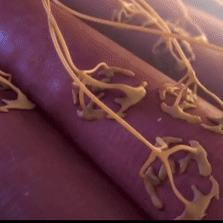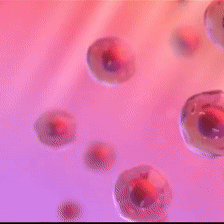How Red Light Therapy Works



How Red Light Therapy Works
- Specific Wavelengths of light are penetrated into and absorbed by different depths of human tissue
Mitochondria is triggered for energy production, and detoxifies cells during energy production
Cellular activity maximizes and remainder of the energy floods into the circulatory system
What is Medical Grade Red Light Therapy?
What is Red Light Therapy?
Red Light Therapy, also known as photobiomodulation (PBM) or low-level laser therapy (LLLT), is a treatment that uses light-emitting diodes (LEDs) as the light source for treatment to offer therapeutic benefits.
What are the uses of red light therapy?
Red light therapy, for low-level red and near-infrared light wavelenghts, has been extensively researched and clinically proven to produce medical-grade results for various skin conditions.
Benefits include skin rejuvenation (collagen production, reduced fine lines & wrinkles, recovery from sun damage, reduced pigmentation), reversed inflammation, cellular repair, wound healing, pain relief, and muscle recovery, depending on the light source parameters, treatment schedule, personal background and tissue background.
Other uses of LED light therapy include acne, dermatitis, eczema, psoriasis and rosacea treatment.
How does it work?
Red Light Therapy uses optimized energy output and clinically proven low-level red and near-infrared light wavelenghts; to target cells and enhance cellular energy production and to trigger cellular activity in targeted layers of skin tissue. These wavelengths are readily absorbed into the skin and do not contain harmful ultraviolet light.
What happens biologically?
The light penetrates the skin and reaches the energy-producing cellular organs (mitochondria). Light activates a protein called cytochrome c oxidase, clearing nitric oxide from mitochondria. As the nitric oxide is removed, oxygen absorption in mitochondria increases. Oxygen levels are correlated with the production of energy molecules (ATP). Increased energy production fuels cellular activity.
How long does it take LED light therapy to work?
Therapy for joint pain can make an immediate difference, for muscle soreness a difference in feeling may come in between 8 hrs after the therapy to 3 sessions. Long-term benefits such as the feeling of an energized body, a glowing skin, and faster recovery after strength training may be visible in 4 to 8 weeks.
Consistency is the key to achieving results, as in every other aspect of well-being. You may not notice an improvement, since it will come gradually from the early days. You may expect to receive some feedback from people you know. By measuring and reporting in quantifiable terms, you will realize greater improvement. Don't be shy to take some before and after photos, to see the results yourself.
You can improve the effects even more when combined with proper diet, sleep, and exercise.
What does Systemic Effects mean?
Systemic effects are defined as the effects that occur in distant tissues, from where the medical device is no contact with. Red Light Therapy has proven to have systemic effects at some level, which means; your whole body is influenced by the effects of Red Light Therapy at some extend.
What is the background of Red Light Therapy?
Initially conceived by NASA for plant growth experiments during shuttle missions, LED Light Therapy unexpectedly revealed potential in the realm of wound treatment.
U.S. Navy SEALs employed Red Light Therapy to expedite wound healing and regenerate damaged muscle tissues back in 1990s.
Since its inception, extensive research has been conducted to explore its efficacy in various aesthetic contexts, primarily renowned for its ability to boost collagen production and tissue regeneration. Today, this technology has found its way into the hands of aestheticians, where it serves as a tool in the quest to rejuvenate aging skin. Applications extend to the treatment of acne, marking it as a multifaceted asset in the realm of skincare. One 2018 animal study found that blue LED improved the healing of third-degree skin burns.
What is irradiance? How does it relate to red light therapy?
Irradiance (or power density), is a measurement expressing the amount of light energy, shedding on a given area. For red light therapy, this is often expressed as mW/cm² (milliwatts per square centimeter). Irradiance from a light source is adversely affected by distance and ambient light.
Red light therapy is effective within a particular window. The beneficial "sweet spot" in between corresponds to the irradiance of the sun. Hence, mimicking sunlight intensity (total 80-110 mW/cm2, NIR 30-35 mW/cm2) will trigger beneficial cutaneous effects. If irradiance is lower than the physiological threshold value (which is the sunlight intensity, concerning our evolutionary setup), it will not produce beneficial effects. Intensity (irradiance) is likely more important than the fluence (dose) delivered.
How can I calculate the dose in a session?
The commonly used unit for dose is J/cm2 (Joules per square centimeter). The formula to calculate this dose is: J/cm2= (Irradiance in mW/cm2, at the distance of application) x (Treatment time in seconds) / 1000
EXAMPLE: Say that the product you are using has an irradiance reading 100 mW/cm2 at 30 cm (12''). To have a 60 J/cm2 session with the device, while you are 30 cm apart; 60 = 100 x Time (sec) /1000, You need to have a 600 second (10 minute) session.
For skin and topical treatments, the recommended sweet spot of dosing for a given treatment area is roughly between 2-10 Joules/cm2.
For deeper tissues, such as muscles, ligaments, or bone, the sweet spot for a given treatment area is between 10-60 J/cm2. Consult your dermatologist for extended doses.
As a rule of thumb, 10-15 minutes per treatment area at a distance of around 20 to 35 cm for deep tissue or 30 to 48 cm for superficial facial skin therapy on bare skin per day is a great average usage guideline, basically for almost everybody.
For more information about the correct dosing in Red Light Therapy, please visit our blog post The Correct Dose for Red Light Therapy.
Why are LED lights used?
LEDs are the most effective because they deliver designed wavelengths of light.
They offer convenience in light therapy with minimized heat generation.
What are the benefits of Red Light Therapy?
Red light reduces inflammation, pigmentation, and redness, promoting cellular repair and circulation for a vibrant complexion.
What are the benefits of Near-Infrared (NIR) Light Therapy?
Near-infrared light stimulates collagen and elastin production for firmer, youthful-looking skin.
What's the difference between Red and NIR (Near-Infrared) light?
Red light is effective for skin-related issues, while near-infrared light penetrates deeper, suitable for treating muscles and joints.
What are the uses of Blue Light in Red light Therapy?
Blue light penetrates the dermis layer and, targets the oil glands. By reducing the amount of oil that these glands produce, the skin can become drier which in turn could lead to fewer acne breakouts.
Natural blue light is the highest during the sunrise, regulating our wakefulness in our evolution. Exposure to blue light suppresses the release of melatonin -also known as the 'sleep hormone', responsible for regulating sleep and wakefulness- as it signals your brain that it is still daylight, keeping you energized and stimulated, trying to keep you awake and alert.
Blue Light should be used in moderation to maintain a regular and healthy body clock and sleep-wake cycles (circadian rhythm).
Does red light therapy cure my acne?
Red and near-infrared light will heal redness and inflammation caused by acne, but it will not help clear acne. Blue and orange wavelengths are penetrating the dermis layer, which will help to dry the acne. You should target acne and pigmentation (low wavelength) initially for better results.
Remember to use blue light in moderation to maintain a regular and healthy body clock and a sleep-wake cycle (circadian rhythm).
How do different wavelengths work?
Your skin responds as a resistor to wavelengths of light. Higher wavelengths penetrate deeper into the tissue. Wavelengths that do not exceed the near-infrared (NIR) spectrum (900 nm) are considered safe. With multiple wavelengths in a therapy, different layers of the skin tissue can be targeted at simultaneously.
How long will the Red Light Therapy device last?
With proper care and use, the product life is equivalent to the LED bulbs' service life, which is +15,000 hrs. This is equal to;
Two people sharing a device, each of them having 15-minute sessions, 3 times a week for 1000+ years.
Or, a wellness studio giving 12 LED therapies in 15 minute sessions, every single day for 40+ years.
Our products come with a warranty. Please reach out if you experience any issues with your device.
How does existing facial / body hair relate to red light therapy?
Hair will deflect light. Facial or body hair will prevent some light from penetrating the skin. The best results are achieved when the mask is used after shaving.
What about Health & Safety?
You can see all related health and safety information in ourHealth & Safetypage.




